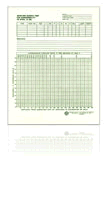We need your consent to use the individual data so that you can see information about your interests, among other things. Click "OK" to give your consent.
ASTM A255-20a
Standard Test Methods for Determining Hardenability of Steel (Includes all amendments and changes 11/16/2020).
Translate name
STANDARD published on 1.11.2020
The information about the standard:
Designation standards: ASTM A255-20a
Publication date standards: 1.11.2020
SKU: NS-1010136
The number of pages: 26
Approximate weight : 78 g (0.17 lbs)
Country: American technical standard
Category: Technical standards ASTM
The category - similar standards:
Annotation of standard text ASTM A255-20a :
Keywords:
end-quench hardenability, hardenability,, ICS Number Code 77.080.20 (Steels)
These adjuncts apply to this standard:
Adjunct to A255 Test Method for Determining Hardenability of Steel
Selected format:Show all technical information.
Additional information
| Significance and Use | ||||||||||||||||||||||||||||||
|
3.1 This test method covers the procedure for determining the hardenability of steel by the end-quench or Jominy test. The test consists of water quenching one end of a cylindrical test specimen 1.0 in. in diameter and measuring the hardening response as a function of the distance from the quenched end. |
||||||||||||||||||||||||||||||
| 1. Scope | ||||||||||||||||||||||||||||||
|
1.1 These test methods cover the identification and description of test methods for determining the hardenability of steels. The two test methods include the quantitative end-quench or Jominy Test and a method for calculating the hardenability of steel from the chemical composition based on the original work by M. A. Grossman. 1.2 The selection of the test method to be used for determining the hardenability of a given steel shall be agreed upon between the supplier and user. The Certified Material Test Report shall state the method of hardenability determination. 1.3 The calculation method described in these test methods is applicable only to the range of chemical compositions that follow:
1.4 Hardenability is a measure of the depth to which steel will harden when quenched from its austenitizing temperature (Table 1). It is measured quantitatively, usually by noting the extent or depth of hardening of a standard size and shape of test specimen in a standardized quench. In the end-quench test the depth of hardening is the distance along the specimen from the quenched end which correlates to a given hardness level. 1.5 The values stated in inch-pound units are to be regarded as standard. The values given in parentheses are mathematical conversions to SI units that are provided for information only and are not considered standard. 1.6 This standard does not purport to address all of the safety concerns, if any, associated with its use. It is the responsibility of the user of this standard to establish appropriate safety, health, and environmental practices and determine the applicability of regulatory limitations prior to use. 1.7 This international standard was developed in accordance with internationally recognized principles on standardization established in the Decision on Principles for the Development of International Standards, Guides and Recommendations issued by the World Trade Organization Technical Barriers to Trade (TBT) Committee. |
||||||||||||||||||||||||||||||
| 2. Referenced Documents | ||||||||||||||||||||||||||||||
|
We recommend:
Technical standards updating
Do you want to make sure you use only the valid technical standards?
We can offer you a solution which will provide you a monthly overview concerning the updating of standards which you use.
Would you like to know more? Look at this page.





 Cookies
Cookies
